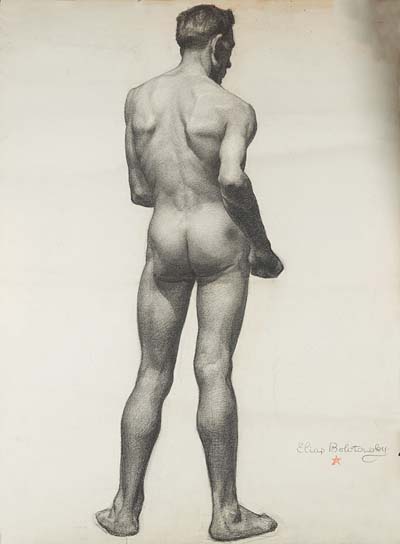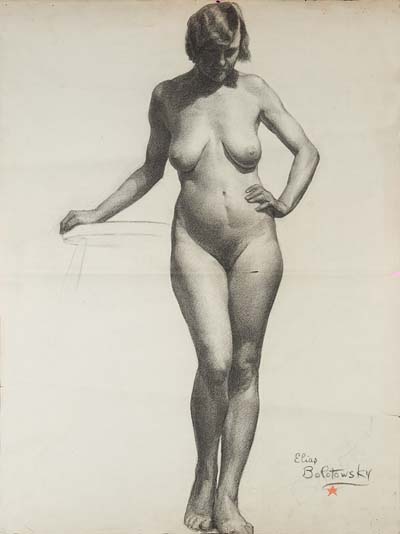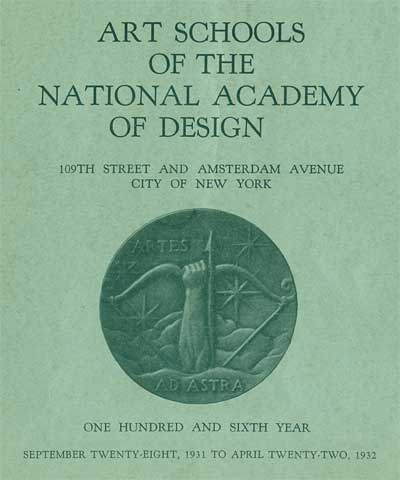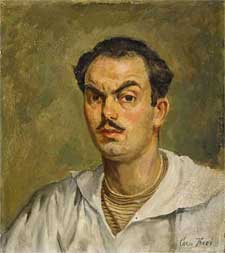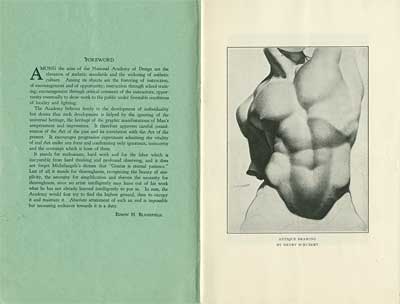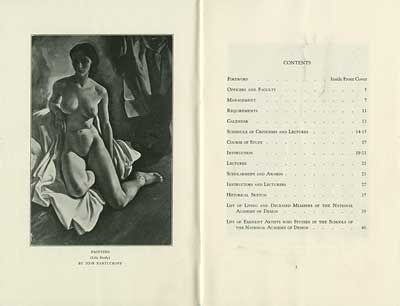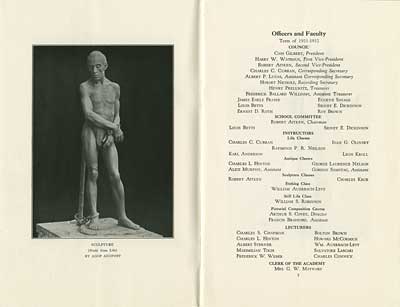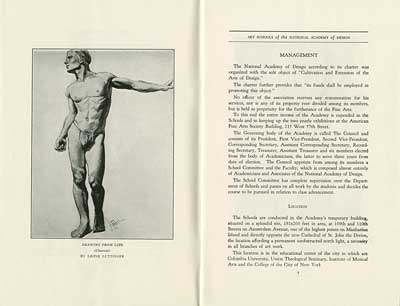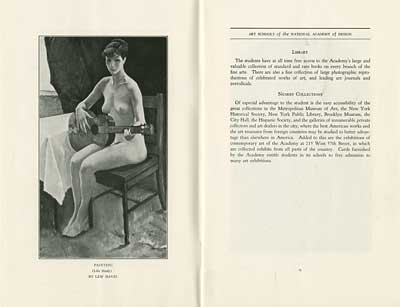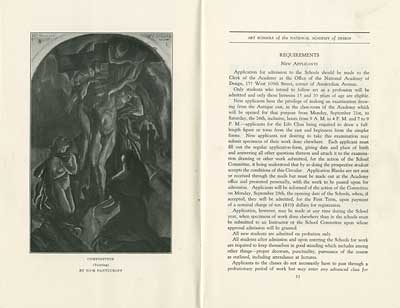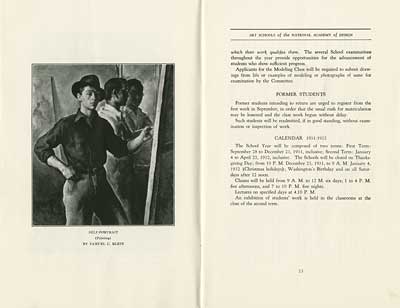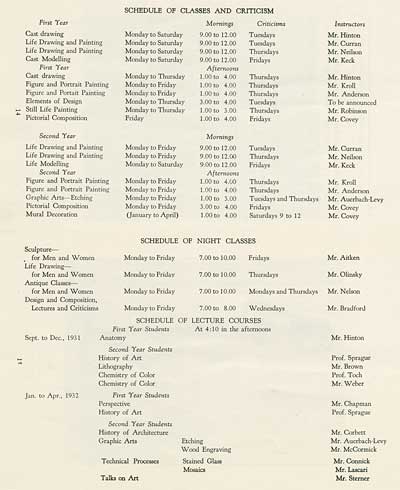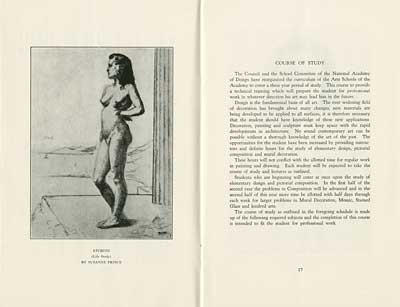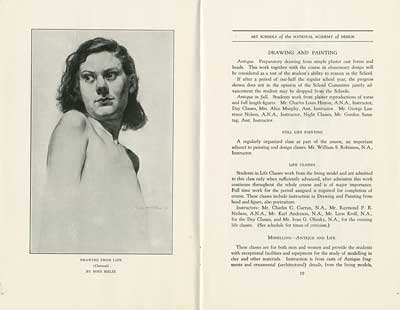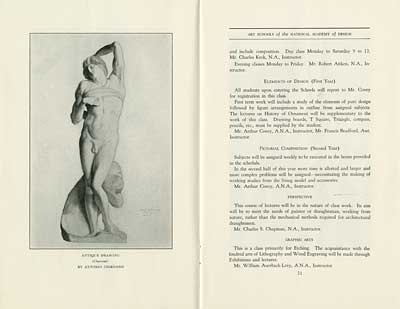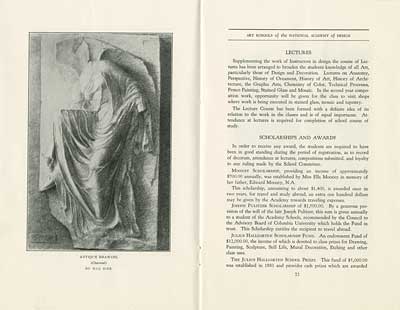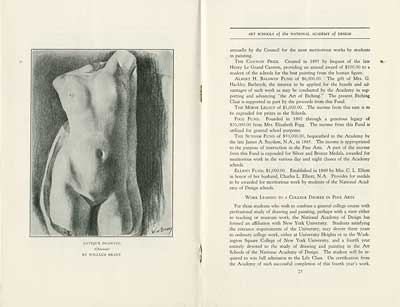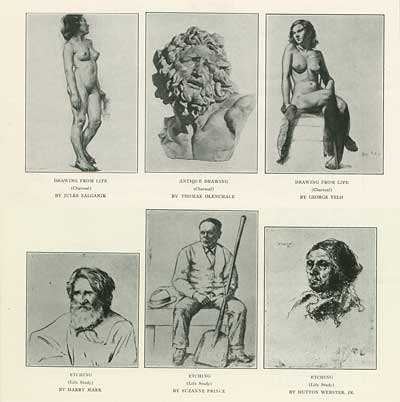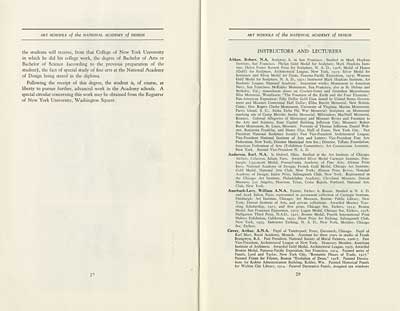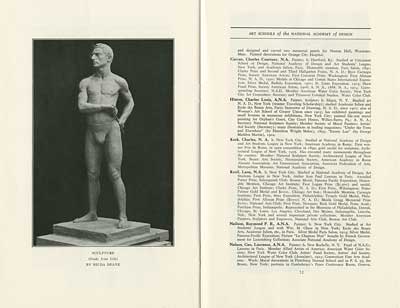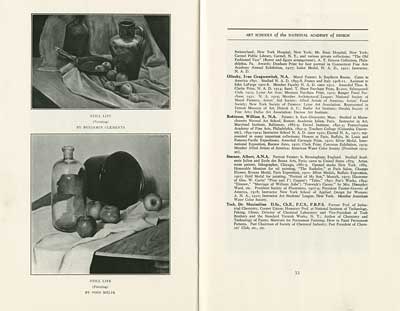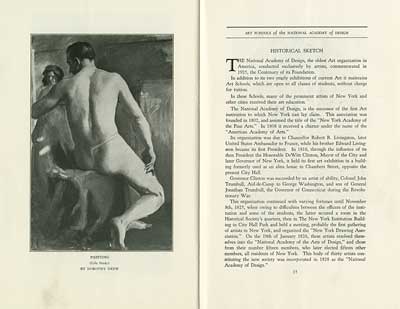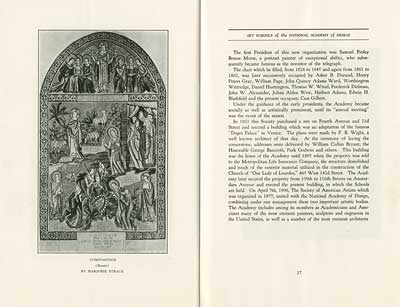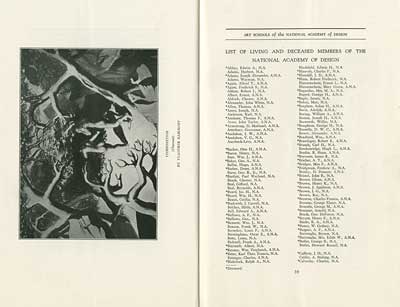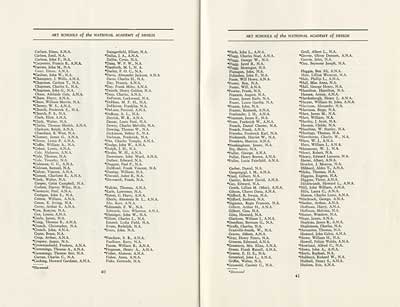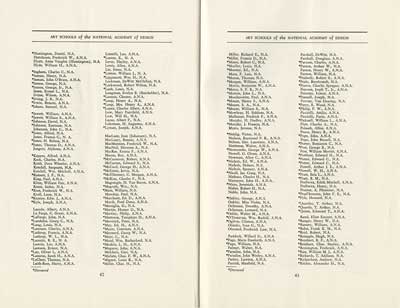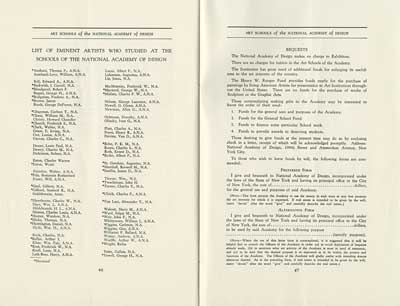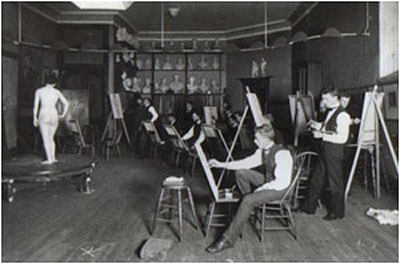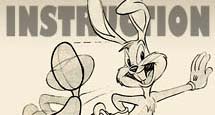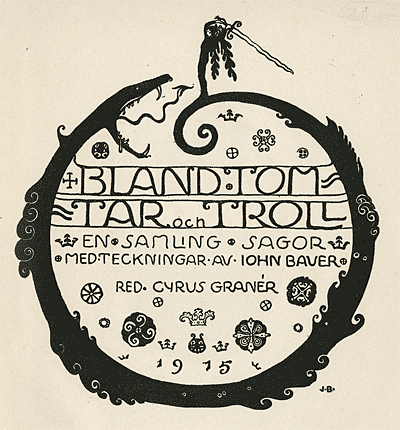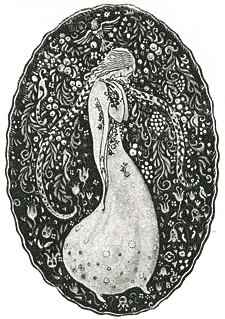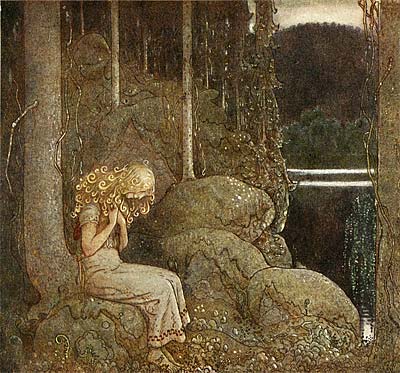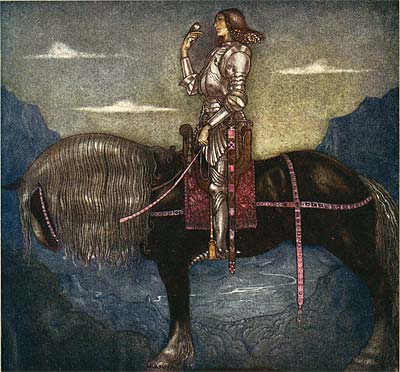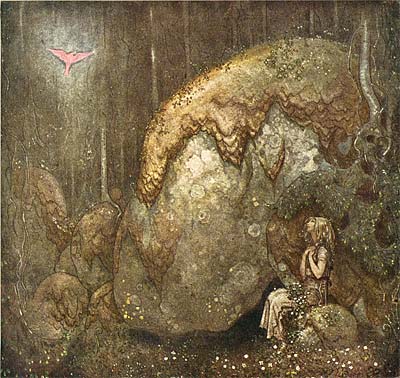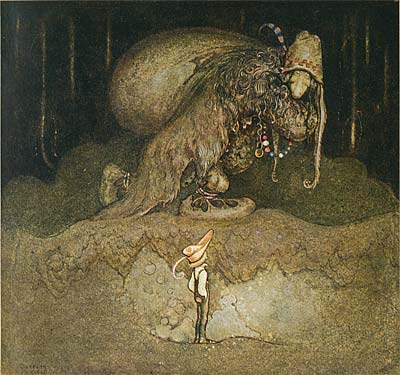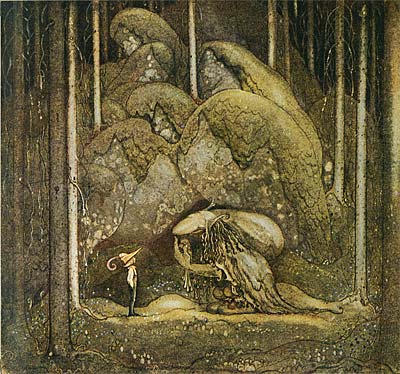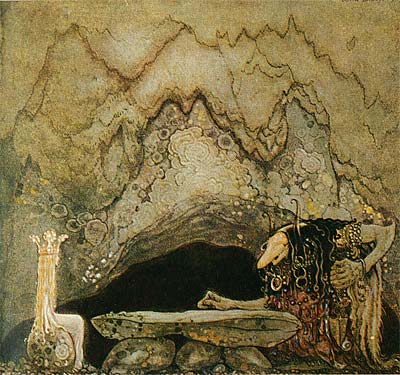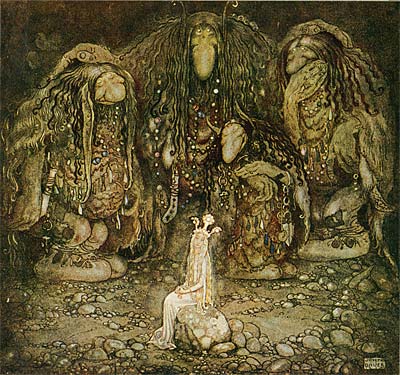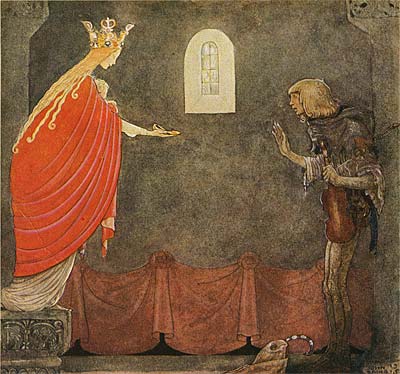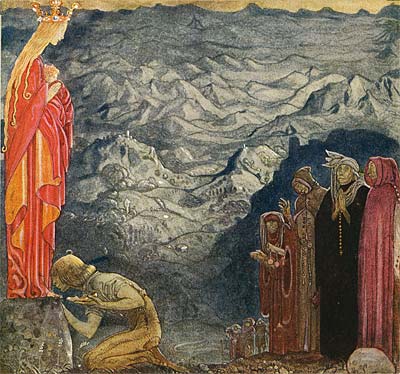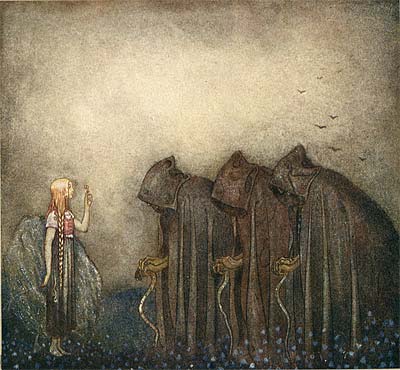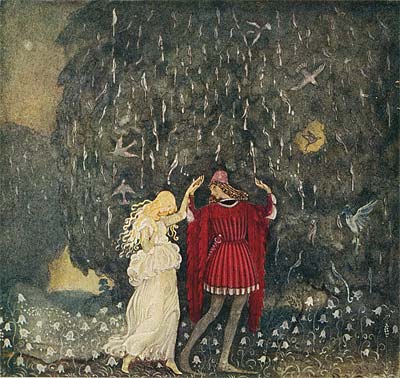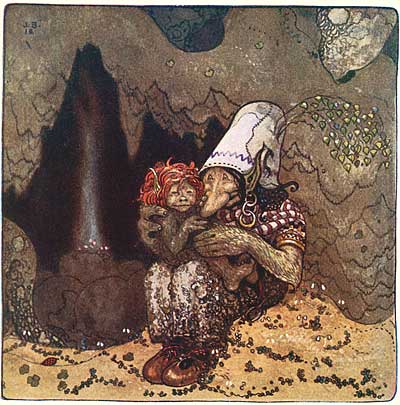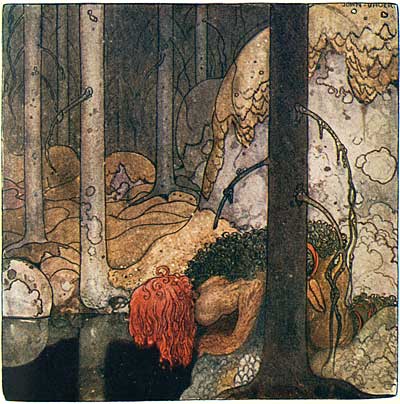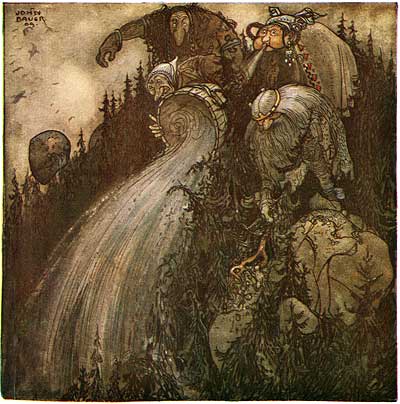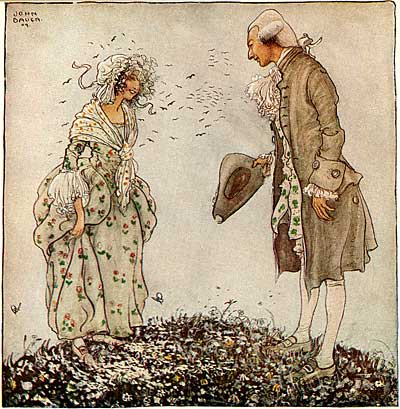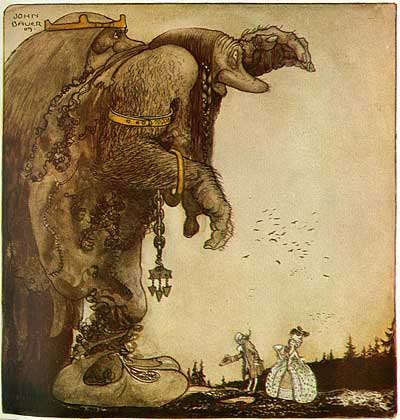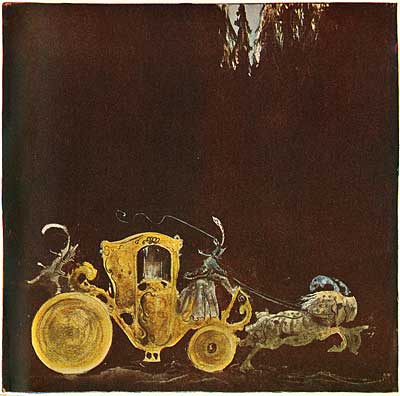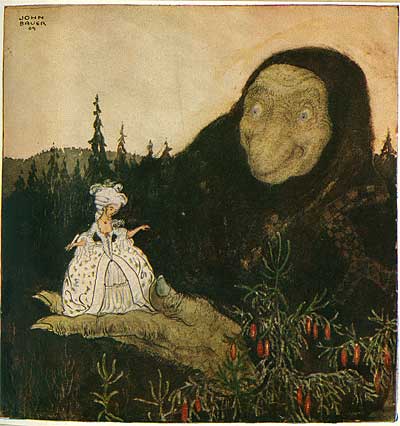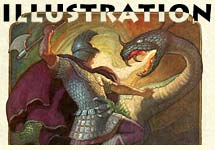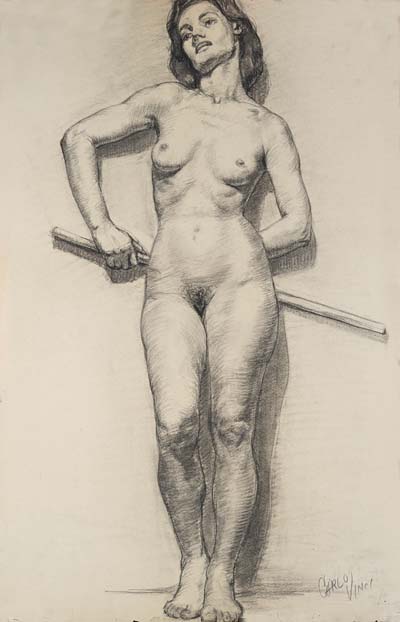
All of us at Animation Resources are deeply grateful to the family of legendary animator Carlo Vinci for the material they have shared with us over the past couple of years. Around 1929, Vinci attended the prestigious National Academy of Design in New York, receiving the silver medal from the Tiffany Foundation Fellowship upon graduation. By stroke of luck, his student drawings have survived in an old portfolio tucked at the back of a closet. They provide an invaluable peek into the artistic development of a golden age animator.
In a previous article, we posted scans of the course outline for the National Academy of Design. The class schedule ran six days a week with studio classes from 9am to 4pm and lecture classes beginning at 4:10pm, and night classes offered from 7pm to 10pm Monday through Friday. It was an intensive program focused on traditional art skills- drawing, painting, and sculpture, as well as art history, composition and color theory.
The first year student began with three hour sessions drawing from casts of classical sculpture. Since the casts were static, the student had the opportunity to work slowly and develop the ability to construct the organic shapes and complex volumes of the human figure without the time constraint of working from live models. They were not allowed to progress to drawing from life until they had mastered the basic principles by working from casts.
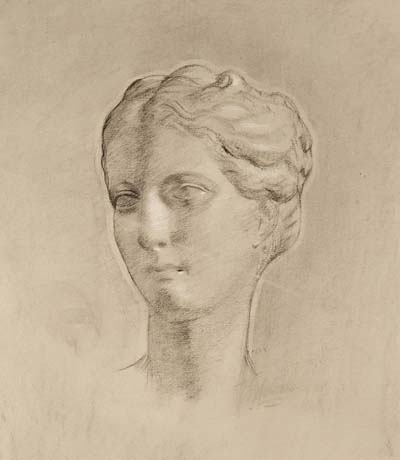
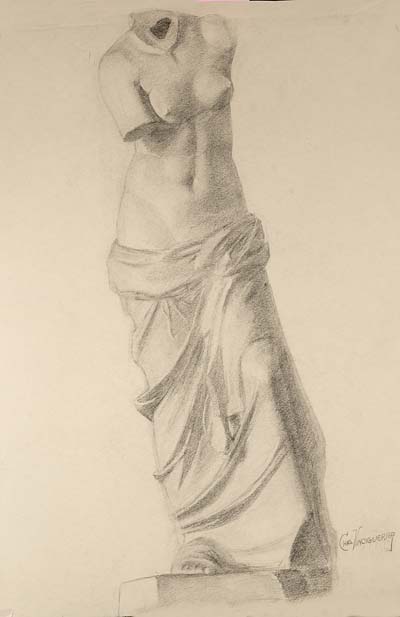
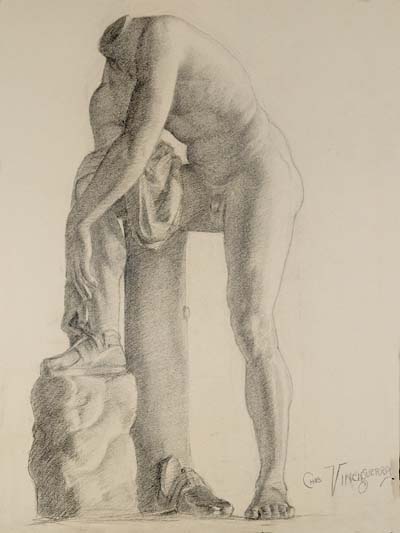
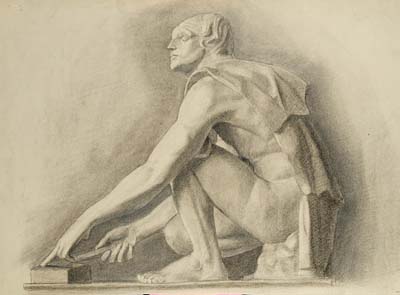
LONG SESSIONS
Drawing from life continued throughout the entire course of study, starting with longer sessions to allow the student time to work out the problems of anatomy and perspective. As time went by and the student gained experience, the sessions were shortened.
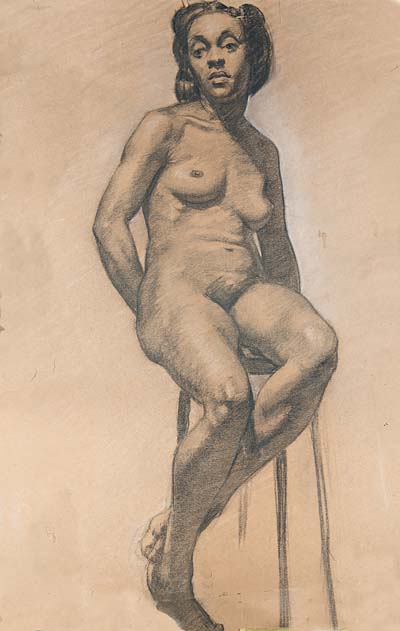
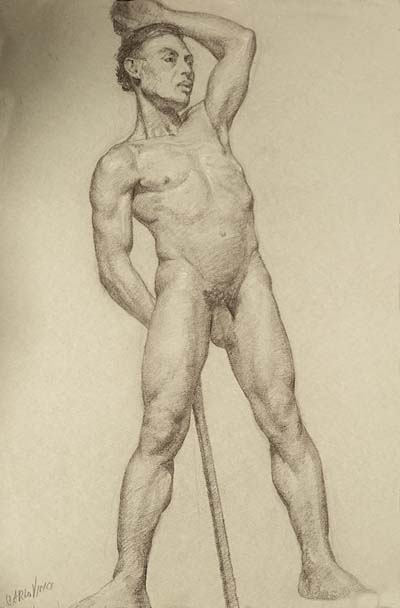
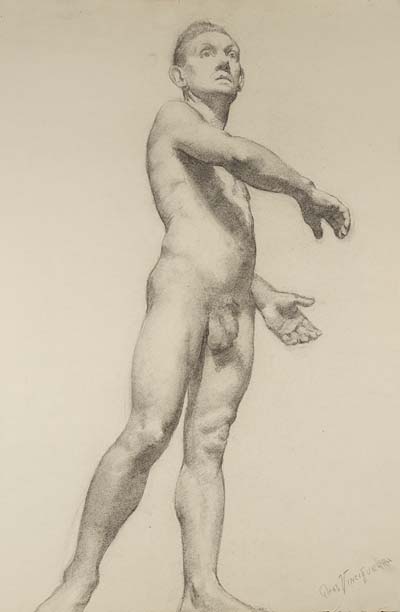
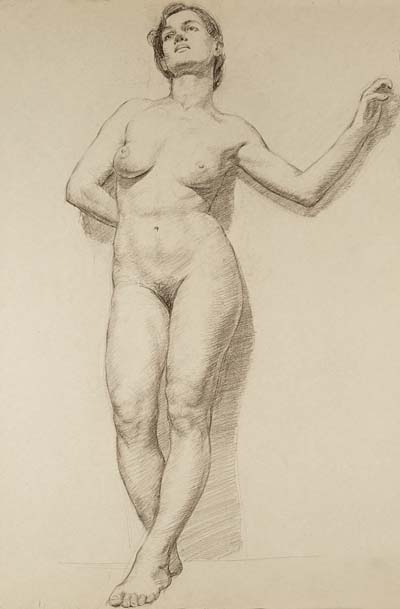
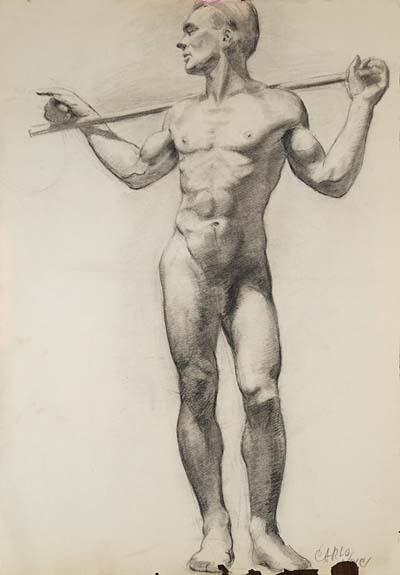
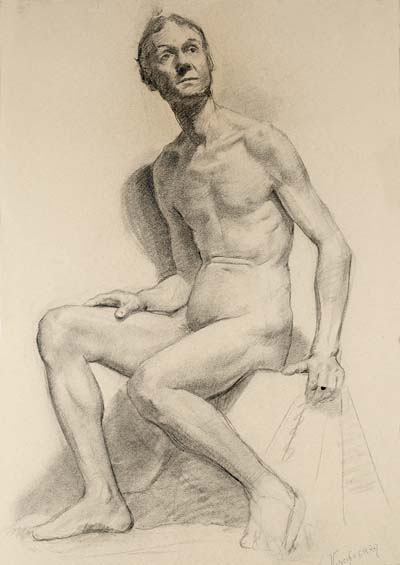
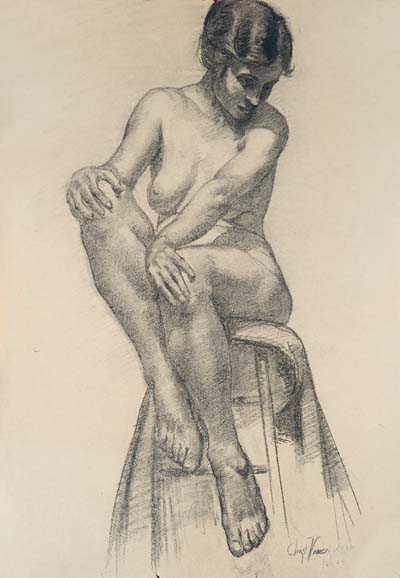
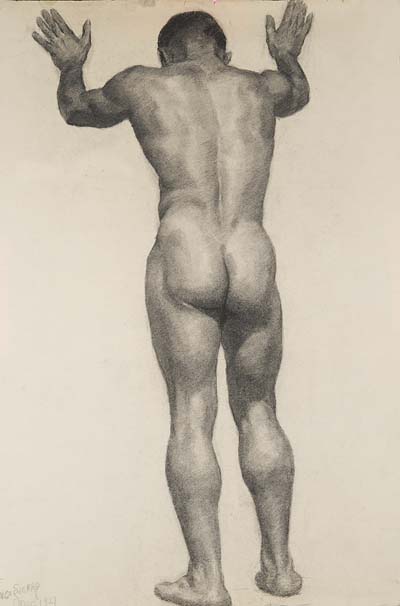
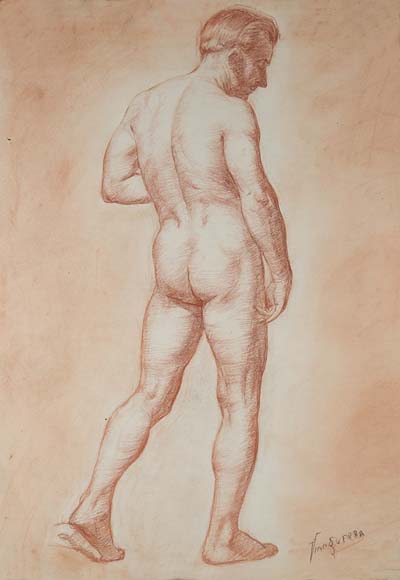
SHORT SESSIONS
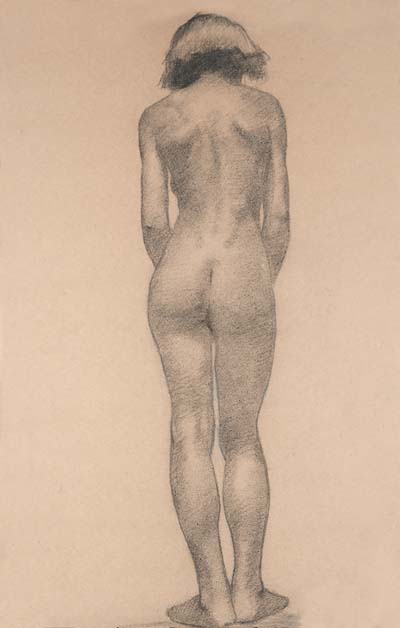
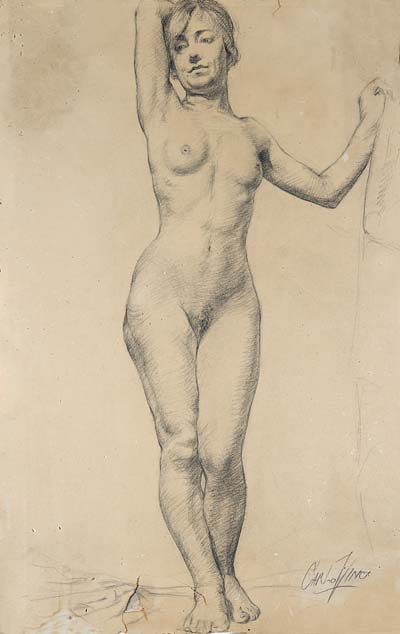
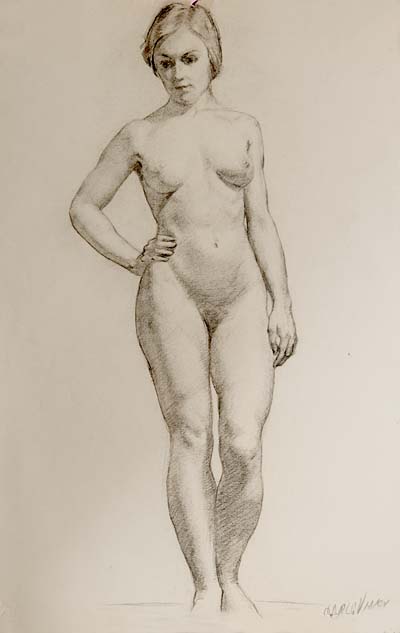
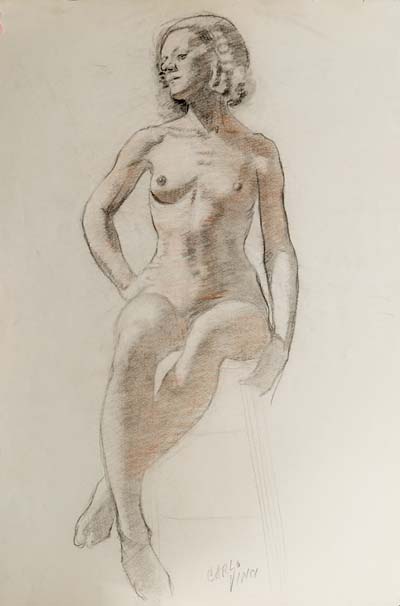
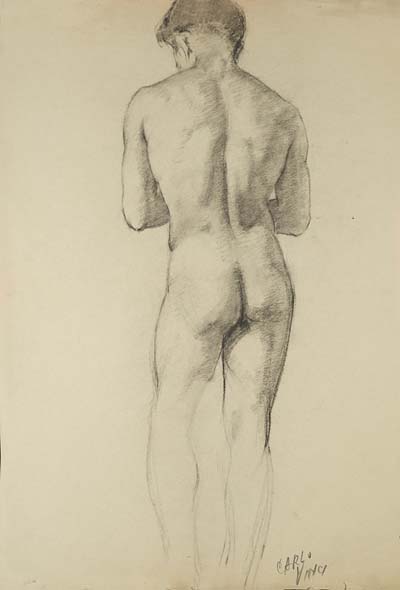
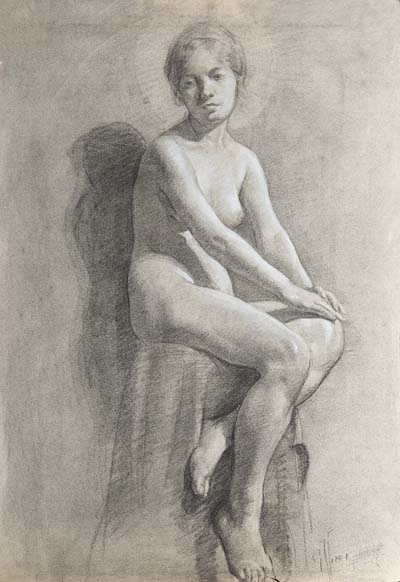
Special classes in portraiture and composition were also on the schedule.
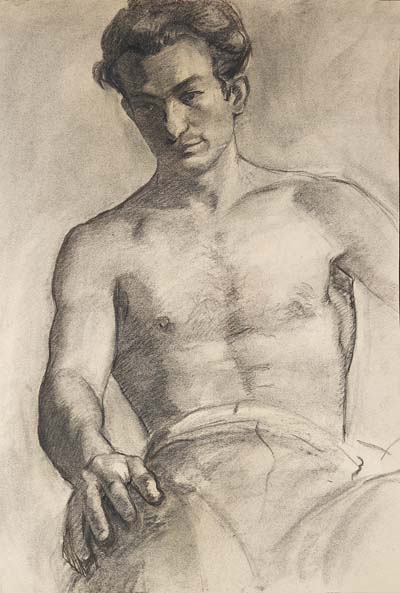
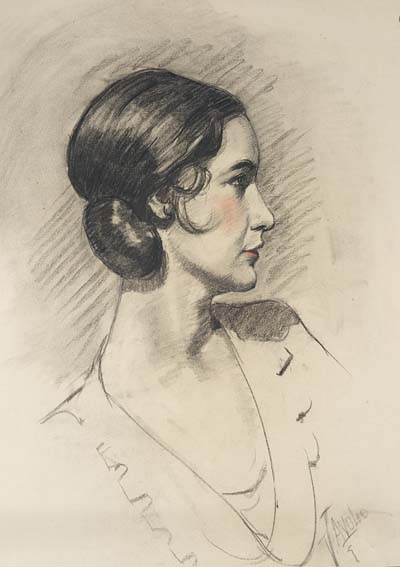
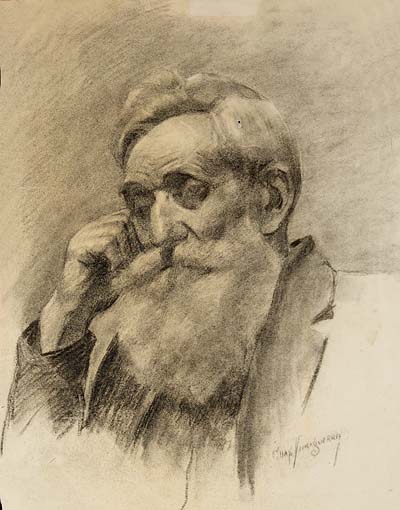
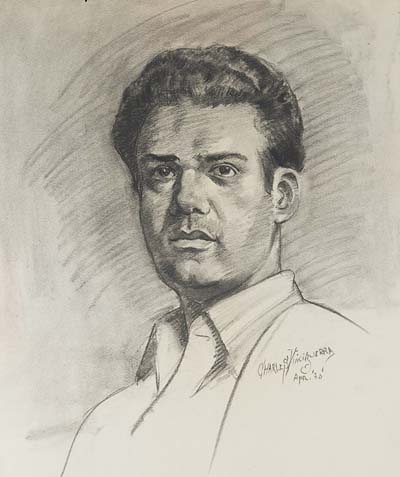
Vinci admired the work of his peers and saved a few of their sketches to study.
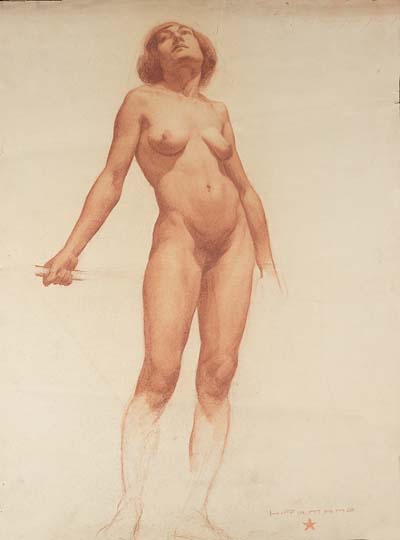
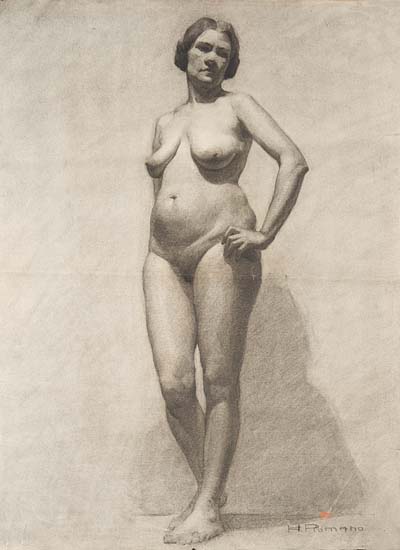
It’s interesting to note that even though Bolotowsky became very well known for his abstract paintings, he was obviously very skilled at traditional representational art as well.
Life drawing forms the foundation for all art. Students of animation would do well to focus on life drawing while they are in school and have the time to develop their skills.
For more on traditional life drawing, please see David Apatoff’s excellent articles on George Bridgman’s Art Class and The Training of Robert Fawcett.
Stephen Worth
Director
Animation Resources
THIS IS JUST THE TIP OF THE ICEBERG!
Animation Resources has been sharing treasures from the Animation Archive with its members for over a decade. Every other month, our members get access to a downloadable Reference Pack, full of information, inspiration and animation. The RefPacks consist of e-books jam packed with high resolution scans of great art, still framable animated films from around the world, documentaries, podcasts, seminars and MORE! The best part is that all of this material has been selected and curated by our Board of professionals to aid you in your self study. Our goal is to help you be a greater artist. Why wouldn’t you want to be a member of a group like that?
Membership comes in three levels. General Members get access to a bi-monthly Reference Pack as well as a Bonus RefPack from past offerings in the in-between months. We offer a discounted Student Membership for full time students and educators. And if you want to try out being a member, there is a Quarterly Membership that runs for three months.
JOIN TODAY!
https://animationresources.org/membership/levels/
FREE SAMPLES!
Not Convinced Yet? Check out this SAMPLE REFERENCE PACK! It will give you a taste of what Animation Resources members get to download every other month! That’s 560 pages of great high resolution images and nearly an hour of rare animation available to everyone to download for FREE! https://animationresources.org/join-us-sample-reference-pack/
![]()
![]() Animation Resources depends on your contributions to support its projects. Even if you can’t afford to join our group right now, please click the button below to donate whatever you can afford using PayPal.
Animation Resources depends on your contributions to support its projects. Even if you can’t afford to join our group right now, please click the button below to donate whatever you can afford using PayPal.














